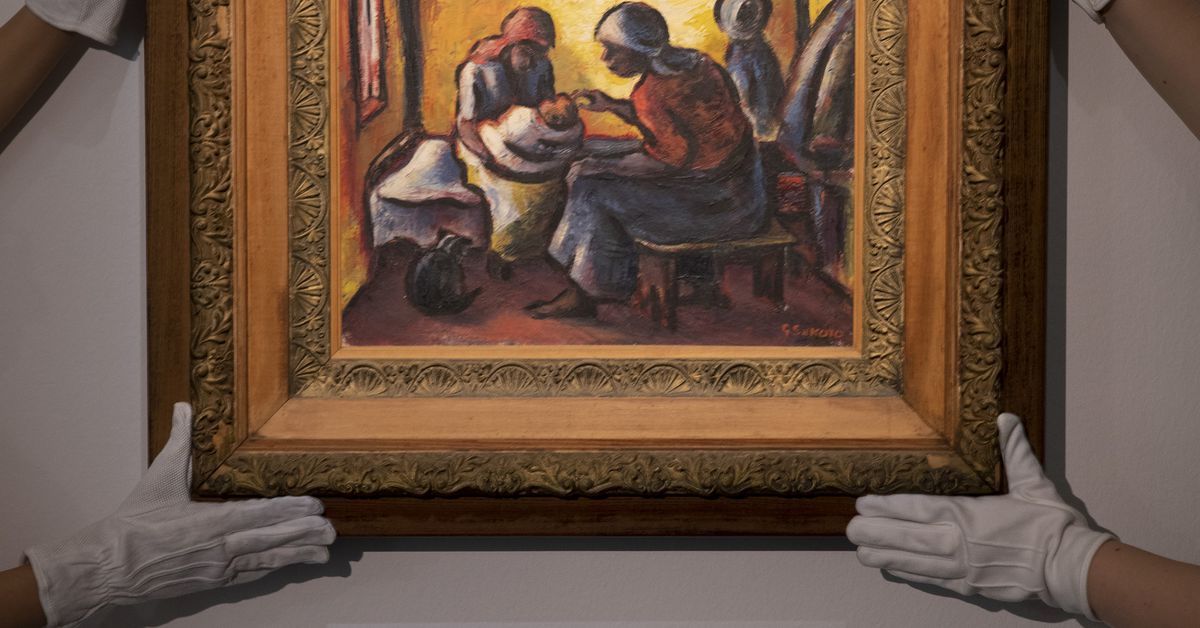Recent auctions of non-fungible tokens (NFT) at the Christie’s and Sotheby’s auction houses might give the impression the fine art world has embrac

Recent auctions of non-fungible tokens (NFT) at the Christie’s and Sotheby’s auction houses might give the impression the fine art world has embraced the new crypto-art trend with open arms. But that would be a mistake. According to one of the art world’s biggest players, the auction houses aren’t leading tastemakers and NFTs still have very little foothold in the broader fine art industry.
“The early signals we see in the art world are around what galleries, collectors and curators do,” says Scott Lynn, CEO of art investing service Masterworks, which fractionalizes blue-chip (physical) art to make the investment more accessible. “So far, it’s been pretty limited [for NFTs]. The Beeple sale [for $69.3 million], the people registered for that [auction] were crypto people, not art people. The Venn Diagram is pretty separate.”
As frenzied as activity around NFTs has been in recent months, that distance from fine art might be concerning to NFT investors, creators and platforms. Blue-chip fine art has been one of the strongest investment categories of recent decades, returning an average of 14% per year since 1995. But so far there’s no solid reason to assume NFTs will benefit from the same social and market forces that keep fine art prices moving steadily upwards.
NFTs are riding a hype train right now, but the market for high-end NFTs in particular is only beginning to spread beyond crypto insiders. The number of people who can or will pay multimillion-dollar price tags for digital collectibles is finite, and at the moment fine art is a major rival for their dollars. In 2018, art was the top unconventional investment for high-net-worth individuals, edging out wine, diamonds and stamps. Gaining a foothold in the fine art industry, then, could make the market momentum of NFTs more sustainable.
“We view [NFTs] more as an extension of crypto than we do as enthusiasm for art,” says Lynn. He should know – he says he’s been an art collector since the 1990s and his collection is now one of the largest in the world. Masterworks itself, acting on behalf of its clients, is now the largest buyer in the art market, according to the company.
Fine art is indeed an industry – and a big one. Fine art sales generate about $60 billion in transaction volume a year. According to Deloitte, the total value of blue-chip fine art – the asset’s market cap, if you will – is $1.7 trillion. For scale, that’s not far short of the current $2.3 trillion total market cap of all cryptocurrencies.
Returns on fine art investments have also been huge. Blue-chip art – paintings by big, recognizable, often dead names like Van Gogh – beat the S&P 500 by 180% from 2000-2018, according to Artprice. Those might be modest annual returns by NFT standards, but as any half-decent investor will tell you, it’s the long run that usually counts. Without that kind of track record, NFTs are still highly speculative from a finance and investing perspective.
NFT valuations would be reinforced by better integration with the complex taste-making apparatus of the fine art world. The art industry’s big numbers are supported by a humming and many-layered web of commercial galleries, nonprofit museums, curators, critics, dealers, art handlers and hopeful interns. And just as adoption and hype in the blockchain world is largely a matter of what people are talking about on Twitter and Telegram, the value of art pieces is set in large part by the constant conversation and debate within that world.
That conversation is especially important because art, and the quality thereof, is so subjective, according to a 2018 statistical study of art valuation.
“Art appeals to individual senses, pleasures, feelings and emotions,” wrote the research team, led by Samuel Fraiberger, a former Harvard researcher now at the World Bank. “Recognition depends on variables external to the work itself, like its attribution, the artist’s body of work, the display venue and the work’s relationship to art history as a whole. Recognition and value are shaped by a network of experts, curators, collectors and art historians whose judgments act as gatekeepers for museums, galleries, and auction houses.”
The study assembled a dataset of art pieces and followed their prices over long time spans. The conclusion, broadly, was that an artist’s association with high-profile institutions, particularly galleries, had a huge impact on the long-term value of an artist’s work.
“The lasting success of an artist depends on where she gets exhibited,” says Marcus Resch, one of the study’s co-authors. “Translated to the NFT world this means that only NFT art that gets exhibited in a few selected galleries/museums will enjoy lasting value.”
Of course, that doesn’t mean the same Paris and New York galleries and museums that dominate the mainstream fine art world will become gatekeepers for NFTs – in fact, they’ve shown little interest so far. A few New…
www.coindesk.com
